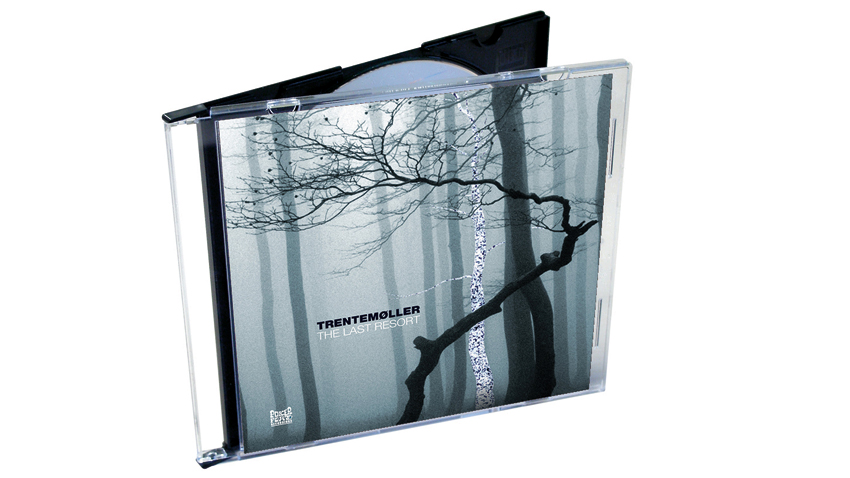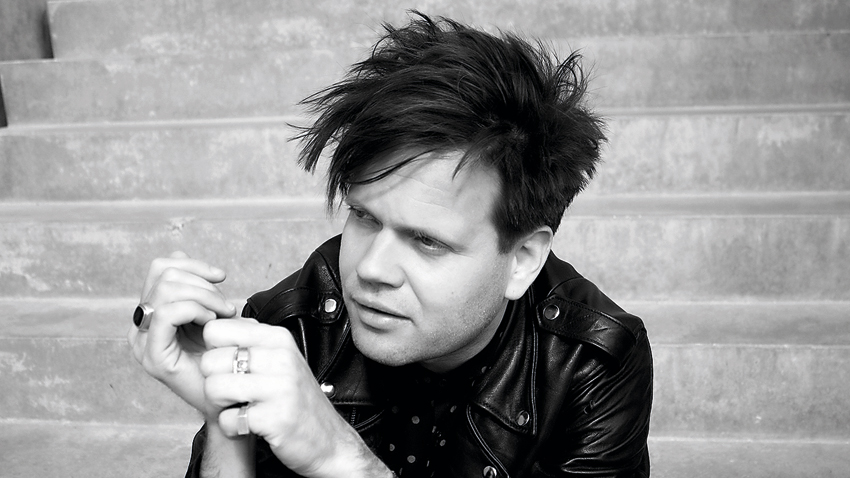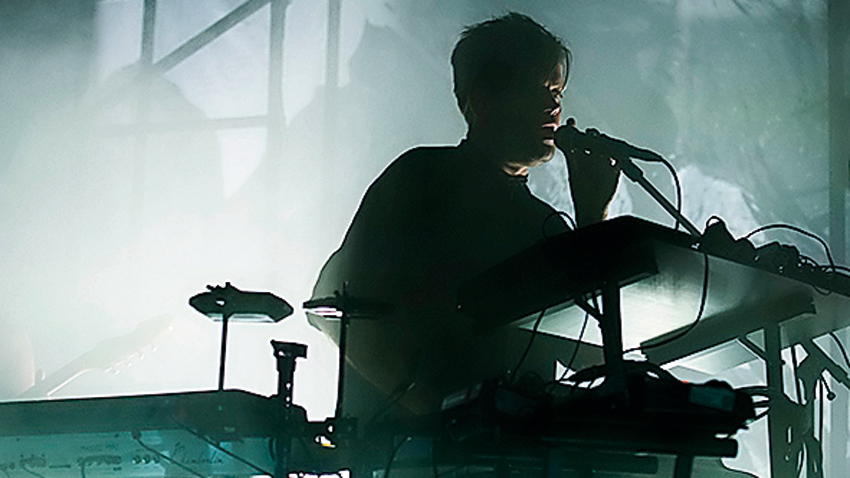Classic album: Trentmoller on The Last Resort
The Danish musician and producer revisits his glorious cinematic opus

Trentemøller’s debut album plays like the soundtrack to a movie that doesn’t exist. It’s a dark, brooding, minimalist masterpiece that you could happily listen to on headphones with a David Lynch flick playing silently in the corner of the room.
In fact, Lynch films were a huge influence on the producer. Those, and the works of scorers like Morricone, would actually sit next to the album more comfortably on the shelf than any of the straight-up techno Trentemøller would have been known for at the time.
Tracks like Snowflake are as fragile as their namesakes, and titles of pieces like While the Cold Winter Waiting fit the frosty soundscapes he was dreaming up in his tiny apartment studio, late at night, and quietly so as not to wake the neighbours.
“I was definitely going for something with this album that was less ‘techno’ than what I’d done in the past,” says Trentemøller. “I really wanted it to be not so beat-orientated, but to have much more focus on the melodies. And I really wanted it to have an ‘album feeling’: begin with a start, and then take people on some kind of trip.”
And over the 13 tracks he does just that, as well as really flexing his production muscles, showing you that he’s not just the guy who turns out banging remixes - he can make personal, introspective music that might actually say something about the human condition.
“It was good for me to show another side of my composing and sound making, and not just music for the dancefloor,” says Trentemøller. “I’d only been releasing 12" singles up to that point, and I was a little tired of the whole ‘club scene’ back then.”
The Last Resort was a real turning point, and something he’s still very proud of today. “It was a very personal album,” he says. “It was mainly just done by me on my little studio setup in my apartment on a laptop I bought from Aldi.
Get the MusicRadar Newsletter
Want all the hottest music and gear news, reviews, deals, features and more, direct to your inbox? Sign up here.
“Listening back, for the first time in about ten years, it still feels very intimate, because it was an intimate album to make. It was my soundtrack album.”
Here, Trentemøller takes us through Last Resort track by track.

Take Me Into Your Skin
“I really wanted to have that feel of bringing the listener into a kind of journey. This whole song is a big build-up, too, and then it breaks into my favourite part of the song - the chords were very much inspired by the chords of a [US alt rockers] Mazzy Star track I loved.
“The whole song is based around this one bassline and simple chords - then I added some different melodies. I did that with my ‘fake guitars’ [laughs]. It sounds like guitars, but it’s all done with synths.”
Vamp
“This came together when I was playing bass guitar. I’m not a very good bass player, but I could do something very simple. Then I sampled that. The whole song is based around that.
“Then I wanted to make the sound rough, and to have a sexy groove to it. At one point I felt something more rough was missing so I did these synth stabs that you can hear in the middle of the song - that was my Juno-60. I think that was run through some overdrive guitar pedals. It’s quite a simple tune that’s just bass, drums and stabs, coming in and out.”
Evil Dub
“This started off as quite a regular dub/electronica song, then something funny happened. Back then, Myspace was the big thing, and one of my followers there had made his own bootleg of one of my old songs that I really liked, so I wrote to him and asked if I could have the guitar part.
“I thought it would fit really well over the version of Evil Dub I’d made, but it was in a different key and tempo. I had to pitch it down and timestretch it to fit. It was quite hard for me as I was very new to Ableton Live and I didn’t really understand the whole ‘warp’ thing. It took me a long time to make it sync. I was really bad at reading manuals and still am [laughs].”
Always Something Better
“The idea for this song came when I was in this old Danish radio studio. They had a lot of different old instruments that the symphonic orchestra there would use. I found this kind of small piano that had a great sound called a celesta. It had this fantastic glockenspiel sound that I used for this song.
“It was something that was quite hard to recreate with a plugin. You could really sense the fragile elements to it. It had all these quirky sounds that you just couldn’t find in a plugin. I really loved it.
“It added this organic sound that the whole album had. It helped create that contrast between something that was very new and crisp, and this 400-year-old instrument, that really added this special element to it.”
While The Cold Winter Waiting
“This title was totally stolen from a Mazzy Star song - as you can tell I’m a huge fan of their work [laughs]. It was a sentence in one of their songs, Rhymes of an Hour.
“A lot of the songs on my first album have these digital ‘clicks’ through them. They’re really rhythmically programmed. They came from a CD I burned once, where something went wrong, and it made this glitchy noise. The CD had no music on it, but lots of weird clicks. So I used up two days just sampling up every little click from this glitchy CD, because they all sounded so different. I ended up with a huge library of about 200 clicks. I then used them to program percussion through tracks like this.”
Nightwalker
“This also has bits of that CD error noise on it. It became part of my signature sound for this album, I think. These very high-end and trebly digital clicks.
“This is more of a straight dub/electronica track, though, with some synth stabs in it. I was very much inspired by Basic Channel [the German dub and techno outfit]. I wanted to do something similar to what they were doing. I used my Virus over the top to bring in another element.”
This also has bits of that CD error noise on it. It became part of my signature sound for this album, I think. These very high-end and trebly digital clicks.
Like Two Strangers
“Again, I used the celesta instrument from the radio studio on this track. Then there’s a ride from the drum set they had there, too, which I played.
“It was a very simple drum sound. Not jazzy, because I didn’t want that, but the brushes made it more gentle. I started with a much more electronic beat, but it didn’t feel right. So it was very nice to use the acoustic drums.
“I play instruments, but not too much. I started off playing drums before I played piano. I can also play a little bass and guitar. It’s just enough for me to play some simple parts on my songs, then cut it up. My main instrument would be piano and keyboards.”
The Very Last Resort
“This is a song that is very cinematic. I wanted it to be very score-like. I was inspired by the mystical feeling of David Lynch movies, and Ennio Morricone’s work.
“Then I used some kind of weird dialogue that I sampled from this Spanish movie. I didn’t want people to understand what was being said. I wanted it to sound like two humans talking together. It’s a woman and a man. I really liked the idea that if I put a lot of reverb and delay on it, it would sound like these ghostly words, but you couldn’t hear what they were saying. That made for a special feeling for the whole song.
“This album was also released on vinyl, so this also served as an end to part one on the vinyl release.”

Snowflake
“This was the perfect start to part two. It starts with being quite ambient, then it has this techno synth that slowly fades in, from the Virus.
“It was a song that I wanted to have that ambient feel to it, but then surprise the listener with that very nice, nearly downtempo, feel, destroyed by an aggressive synth riff going on. Again, there’s a lot of those CD clicks going on, too.”
Chameleon
“This, and the next track, are the only two that are techno-like. They’re very much inspired by my old sound - back then.
“The bassline here was also heavily inspired by [classic electric punk duo] Suicide, who were one of the bands that I was really into. I wanted to do a simple bassline that had that vibe to it. Then it’s just really the Virus and my Juno-60 – they were the only two synths I had at the time [laughs]. That was basically it. It’s the only song, really, that has that ‘shuffle’ feel to it.”
Into The Trees (Serenetti Part 3)
“This keeps the energy going. It fits well with the last one. There are some drums recorded in that radio studio. I only had that space available for a few hours that day. In that time I recorded all the drums for the album. You can definitely hear those live drums, played by Henrik Vibskov, who went on to be the live drummer in my band, when we were touring
“I wanted this to be very electronic, but also have that human feel to it - that organic warmth. Those live drums added something special to it. The drums here have a nearly ‘march’ like feel to them. Henrik was really good at getting that across.”
Moan
“There’s a little sample in there of a car horn and some birds, that you can hear far away. I just put out my microphone by the window to get some atmosphere from the street.
“That was something I would do a lot back then. I also would go into the woods and just record sounds to use, too. I would use them as atmosphere gently in the back of the mix. You might hear them if you listen very closely on headphones to the album again. It gives a dimension that you aren’t really aware of. It was more to the front on Moan, though.”
Miss You
“This song was done in two hours, maximum. It was recorded live, so I just sat on my Virus and played to a click track.
“It was a very simple thing to do, and done very late in the evening, feeling very melancholic - I missed my girlfriend.
“I thought about adding some drums - I’m normally one to go back to a track the next day to work more on it, but I somehow felt that this was very simple, and pure, and fragile. I liked that.
“I would say that this is the only track in my entire career that I have never touched after the first session. It was mixed and everything in those two hours. I was happy I was capable of doing that. It is easy to over-do stuff. It ends the whole album in a very honest way.”
For all that's new and interesting in the ever-evolving world of Trentemøller, visit his online home.


Future Music is the number one magazine for today's producers. Packed with technique and technology we'll help you make great new music. All-access artist interviews, in-depth gear reviews, essential production tutorials and much more. Every marvellous monthly edition features reliable reviews of the latest and greatest hardware and software technology and techniques, unparalleled advice, in-depth interviews, sensational free samples and so much more to improve the experience and outcome of your music-making.
"Reggae is more freeform than the blues. But more important, reggae is for everyone": Bob Marley and the Wailers' Catch a Fire, track-by-track
“Part of a beautiful American tradition”: A music theory expert explains the country roots of Beyoncé’s Texas Hold ‘Em, and why it also owes a debt to the blues










